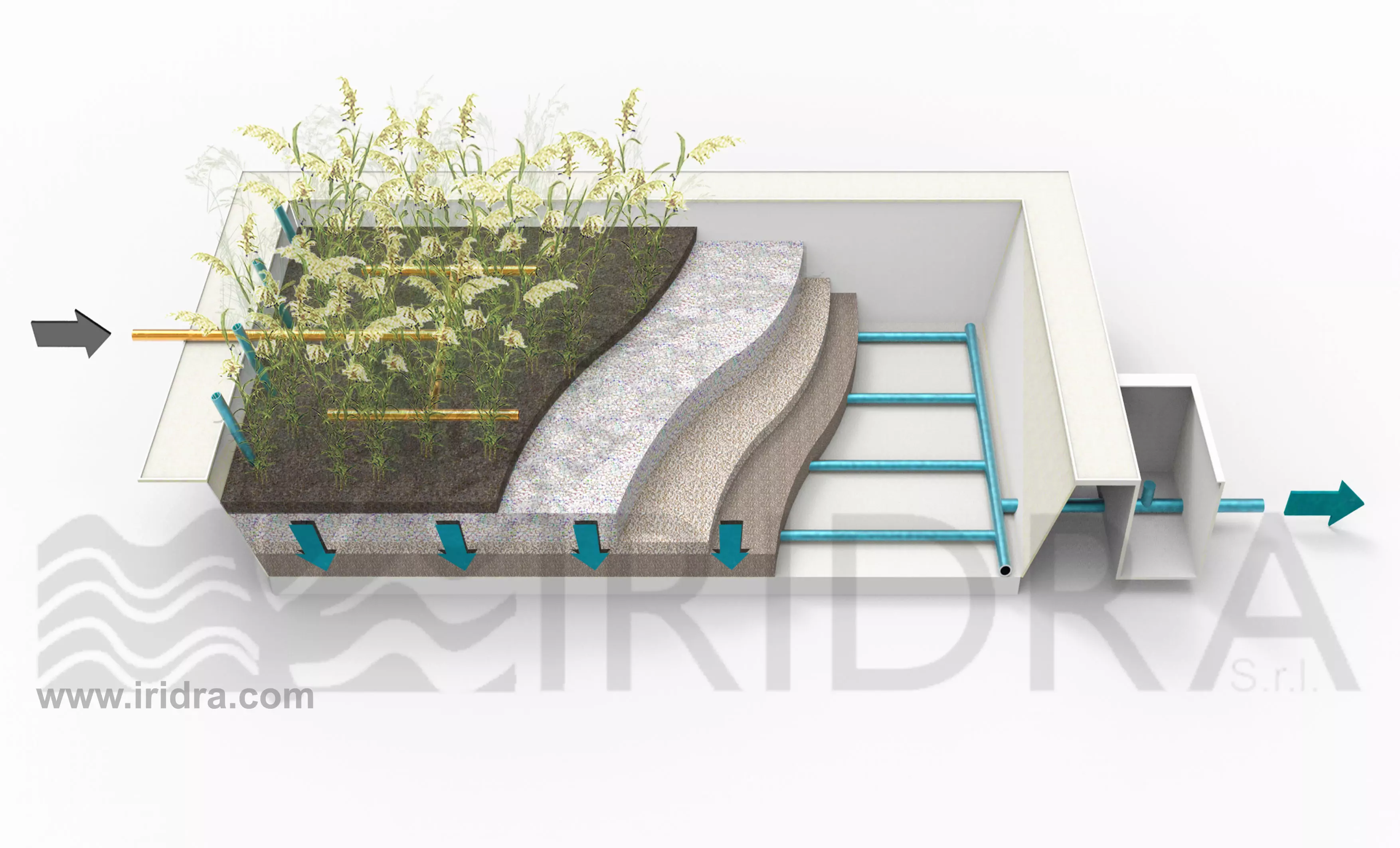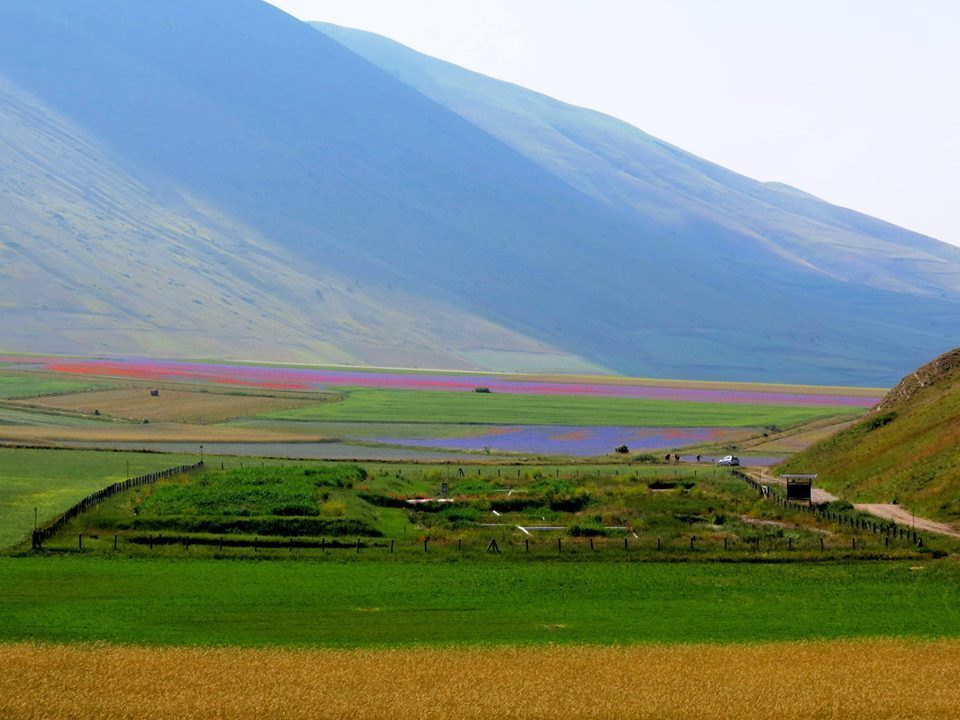French Reed Bed (FRB) for raw wastewater
French Reed Bed (FRB) is technology known in France since 20 years, but innovative in Italy and in many countries outside the French territory. FRB advantage is the not need of any primary treatment (no septic tank, only grit removal), reducing even further O&M cost of nature-based solutions for wastewater treatment (no yearly sludge removal). Moreover, removal efficiencies are high with relatively low areal footprint for nature-based systems.
IRIDRA is currently the only Italian firm that has successfully designed and realized these systems; particularly, IRIDRA has designed among the bigger secondary FRB in the World, the FRB WWTP of Ohrei municipality (up to 20,000 PE).

French Reed Bed (FRB) is a well-known technology in France, where more than 2000 WWTP are implemented within the range of 200-5000 PE (Morvannou et al., 2015; Paing et al., 2015). The typical scheme includes a first stage for raw wastewater subdivided into three lines, each one periodically fed for 2-4 days and having a resting period of 4-8 days. In this way, a proper drying and aerobic oxidation of the sludge layer forming on the top is guaranteed. The second stage can be both a conventional horizontal or vertical flow wetland, function of water quality target to be met.
No primary treatment - No Sludge - Less O&M costs - Greater simplicity
FRB does not require typical primary treatment of conventional constructed wetland solutions (septic or Imhoff tanks). Indeed sludge is accumulated on top of the 1st FRB stage, creating a sludge layer that grows with a rate of 1-2 cm per year. The sludge is removed every 10-15 years when they are well stabilized and are suitable for reuse in agriculture as soil amendment.

Scheme of CW WWTP of Castelluccio (1000 AE), designed by IRIDRA following the FRB scheme
No odour nuisance
The sludge is dried on top of the FRB in aerobic conditions, not producing odour issues.
Low construction and O&M costs, low areal footprint
The many FRB systems built and monitored in France permitted an optimization of area occupation. FRB needs 2 to 3 m2/PE, as a function of different water quality target to be met. This range is lower in comparison to conventional constructed wetland solutions (usually 3-5 m2/PE). If coupled with the circular economy principle, it is possible to propose only the first FRB stage, which occupies less than 1.5 m2/PE; in this case, the effluent is rich in nutrients and it is well suited to irrigate non-edible crops or to produce biomass for energy purposes.
IRIDRA's experience
IRIDRA adopted the FRB system to design the WWTP of Orhei municipality (20,000 PE), currently the biggest secondary treatment wetland worldwide. Other examples of FRBs designed by IRIDRA are the WWTP of Castelluccio municipality (1,000 PE) and the treatment plant of Garelli Shelter at 2000 m a.s.l.
FRB is also a proper solution for the treatment of wastewater with high organic loads. Within this field, IRIDRA has used FRB to treat wastewater produced by big wineries (40-100 m3/d) such as those of Cecchi and Sons or the one of Val delle Rose.

CW WWTP of Castelluccio di Norcia (1000 PE), sited in an area of high naturalistic value (Natural Park of Monti Sibillini). Designed by IRIDRA in 2011.

CW WWTP of Orhei municipality (20,000 PE - Moldavia), designed by IRIDRA in collaboration with P&P, SWS, Hydea. Financed by the World Bank, it is among the biggest CW system worldwide.

